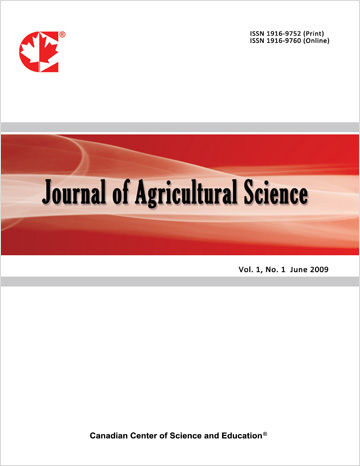White Bean Desiccation With Caprylic Plus Capric Acid
- Nader Soltani
- Christian Willemse
- Peter H. Sikkema
Abstract
There is no published information on the efficacy of caprylic plus capric acid for desiccating weeds and white bean under Ontario environmental conditions. Five field experiments were conducted from 2021 to 2023 in southwestern Ontario, Canada to evaluate the effectiveness of caprylic plus capric acid, applied at 3, 6, and 9% v/v and other commonly used desiccant herbicides in white bean. White bean desiccation levels were generally similar to the nontreated control at most evaluation points, except at 6 and 9 days after application (DAA) with the application of caprylic plus capric acid at 6 and 9% v/v which resulted in up to 8 and 6% greater white bean desiccation, respectively, compared to the nontreated control. Caprylic plus capric acid at 3, 6, and 9% v/v desiccated green pigweed 0-51%, common lambsquarters 0-16%, common ragweed 4-21%, green foxtail 10-53%, and barnyardgrass 7-37%. Glyphosate, saflufenacil, and glyphosate + saflufenacil desiccated white bean by 80-99%, 81-100%, and 82-100%, respectively, at 2, 6, 9, and 15 DAA. These levels were generally similar to the nontreated control, except at 2 DAA, when white bean was desiccated 4% greater with glyphosate + saflufenacil than the nontreated control. At 15 DAA, glyphosate desiccated green pigweed 100%, common lambsquarters 100%, common ragweed 70%, green foxtail 96%, and barnyardgrass 82%; saflufenacil desiccated green pigweed 100%, common lambsquarters 69%, common ragweed 96%, green foxtail 41%; and barnyardgrass 28%; and glyphosate + saflufenacil desiccated green pigweed 100%, common lambsquarters 100%; common ragweed 99%, green foxtail 98%, and barnyardgrass 93%. Based on these findings, caprylic plus capric acid has limited potential as a desiccant for white bean.
- Full Text:
 PDF
PDF
- DOI:10.5539/jas.v17n3p28
Journal Metrics
- h-index: 67
- i10-index: 839
- WJCI (2023): 0.884
- WJCI Impact Factor (2023): 0.196
Index
- AGRICOLA
- AGRIS
- BASE (Bielefeld Academic Search Engine)
- Berkeley Library
- CAB Abstracts
- ChronosHub
- CiteSeerx
- CNKI Scholar
- Copyright Clearance Center
- CrossRef
- DESY Publication Database
- DTU Library
- e-Library
- EBSCOhost
- EconPapers
- Elektronische Zeitschriftenbibliothek (EZB)
- EuroPub Database
- Excellence in Research for Australia (ERA)
- Google Scholar
- Harvard Library
- IDEAS
- iDiscover
- Jisc Library Hub Discover
- JournalTOCs
- KindCongress
- LIVIVO (ZB MED)
- LOCKSS
- Max Planck Institutes
- Mendeley
- MIAR
- Mir@bel
- NLM Catalog PubMed
- Norwegian Centre for Research Data (NSD)
- Open J-Gate
- OUCI
- PKP Open Archives Harvester
- Polska Bibliografia Naukowa
- Qualis/CAPES
- RefSeek
- RePEc
- ROAD
- ScienceOpen
- Scilit
- SCiNiTO
- Semantic Scholar
- SHERPA/RoMEO
- Southwest-German Union Catalogue
- Standard Periodical Directory
- Stanford Libraries
- SUDOC
- Swisscovery
- Technische Informationsbibliothek (TIB)
- Trove
- UCR Library
- Ulrich's
- UniCat
- Universe Digital Library
- WorldCat
- WRLC Catalog
- Zeitschriften Daten Bank (ZDB)
Contact
- Anne BrownEditorial Assistant
- jas@ccsenet.org
